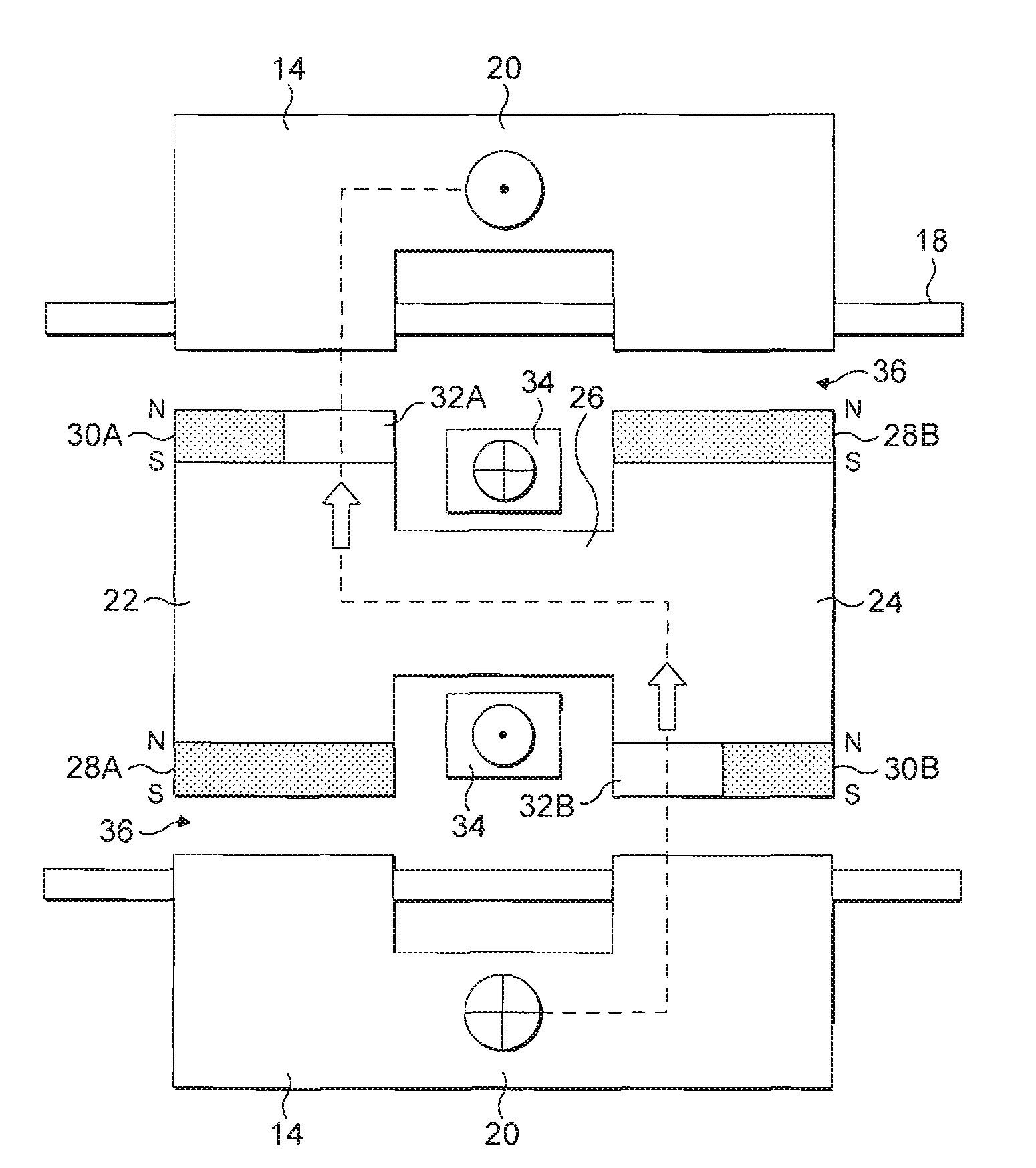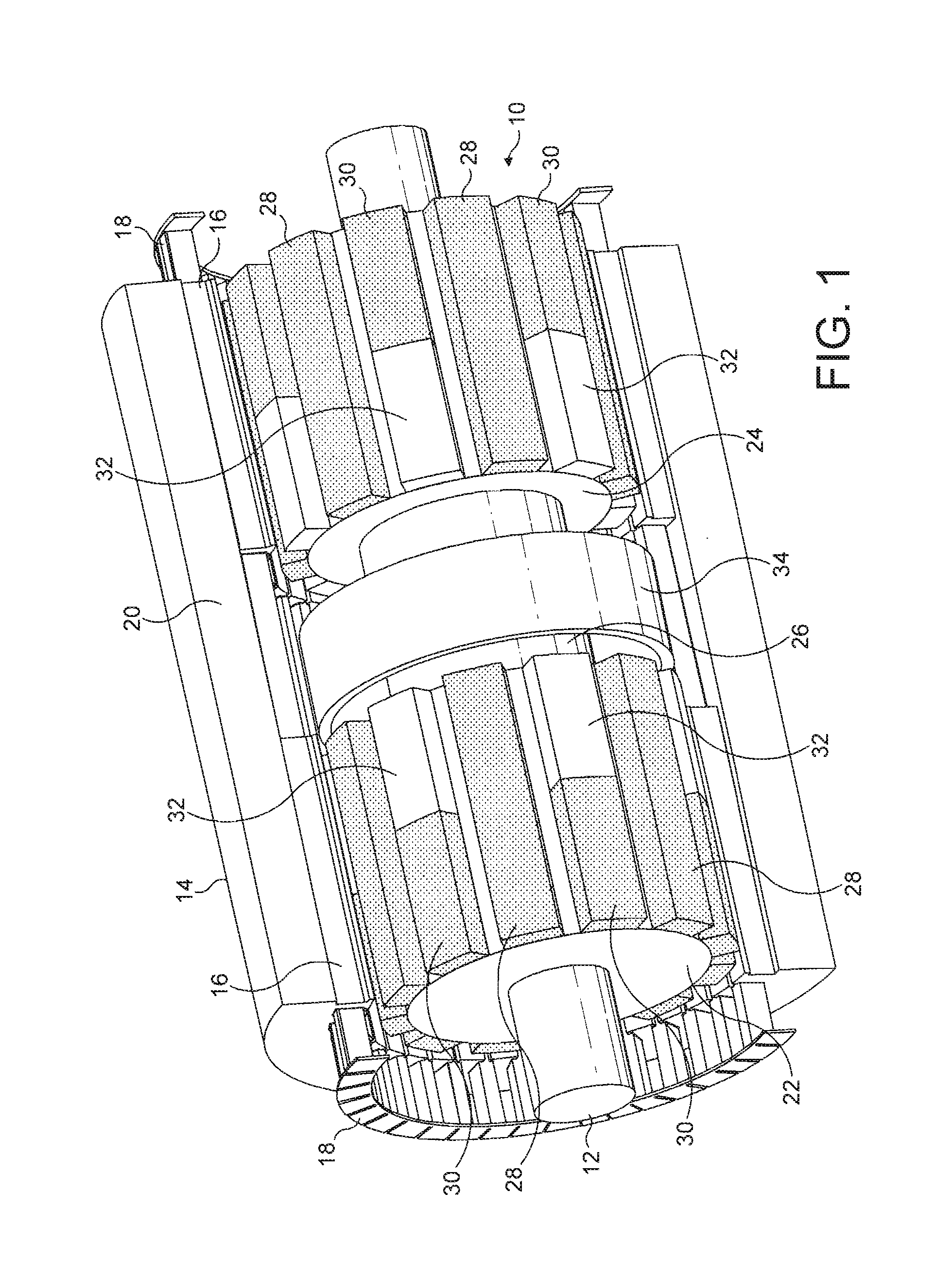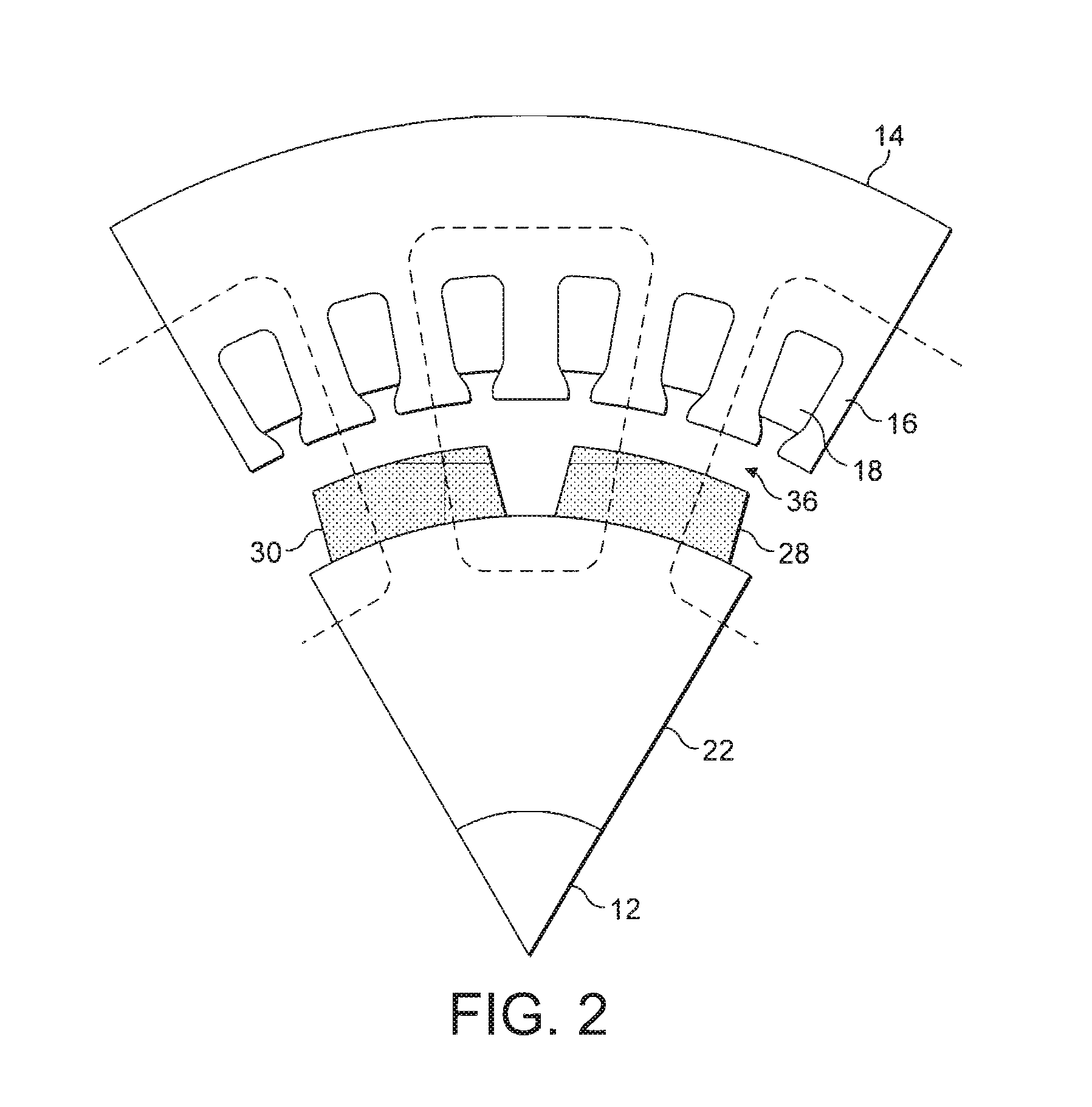Rotating electrical machine
a technology of electrical machines and rotating shafts, which is applied in the direction of synchronous motors, magnetic circuit rotating parts, magnetic circuit shapes/forms/construction, etc., can solve the problems of increasing manufacturing costs and limited maximum size of the machine disclosed in wo 03/003546, so as to facilitate the establishment of a closed flux path through the rotor, facilitate control of the magnetism, and facilitate the effect of facilitating the establishment of a closed flux path
- Summary
- Abstract
- Description
- Claims
- Application Information
AI Technical Summary
Benefits of technology
Problems solved by technology
Method used
Image
Examples
first embodiment
[0058]FIG. 1 shows parts of a rotating electrical machine in the invention. Referring to FIG. 1, the machine comprises a rotor assembly 10 mounted on a shaft 12, and located within a stator 14. In this embodiment the stator is cylindrical, and has a tubular chamber within which the rotor assembly rotates.
[0059]The stator 14 is formed from a plurality of laminated sheets of metal stacked together from left to right in FIG. 1. The majority of the laminations are provided with slotted teeth 16 which hold the stator windings 18. The exceptions are the laminations in a magnetic bridge 20 shown in the centre of the machine. These laminations are similar to the laminations elsewhere in the stator, but without the slot / teeth profiles of the other laminations. Once the laminated stator is formed the windings 18 are inserted, insulated and impregnated using conventional methods.
[0060]The rotor assembly 10 consists of a first rotor section 22, a second rotor section 24, and a rotating magnetic...
third embodiment
[0079]FIG. 9 shows parts of an electrical machine in the invention. Referring to FIG. 9, the machine comprises a rotor 50 located within a stator 52. As in the previous embodiments, the rotor is cylindrical, and rotates within a tubular chamber formed by the stator 52. The stator is laminated, and the rotor may be cast or laminated.
[0080]In the embodiment of FIG. 9, a plurality of permanent magnets 54 are embedded in recesses in the rotor 50. The permanent magnets are orientated such that their north-south axes lie in a circumferential direction within the rotor. Each alternate magnet faces in the opposite direction, such that each adjacent pair of magnets has either both south poles facing each other, or both north poles facing each other. The parts of the rotor between the permanent magnets act as ferrous poles 56, and are magnetised by the permanent magnets.
[0081]FIG. 10 shows a cross section through the electrical machine of FIG. 9. The flux paths within the machine are indicate...
PUM
 Login to View More
Login to View More Abstract
Description
Claims
Application Information
 Login to View More
Login to View More - R&D
- Intellectual Property
- Life Sciences
- Materials
- Tech Scout
- Unparalleled Data Quality
- Higher Quality Content
- 60% Fewer Hallucinations
Browse by: Latest US Patents, China's latest patents, Technical Efficacy Thesaurus, Application Domain, Technology Topic, Popular Technical Reports.
© 2025 PatSnap. All rights reserved.Legal|Privacy policy|Modern Slavery Act Transparency Statement|Sitemap|About US| Contact US: help@patsnap.com



